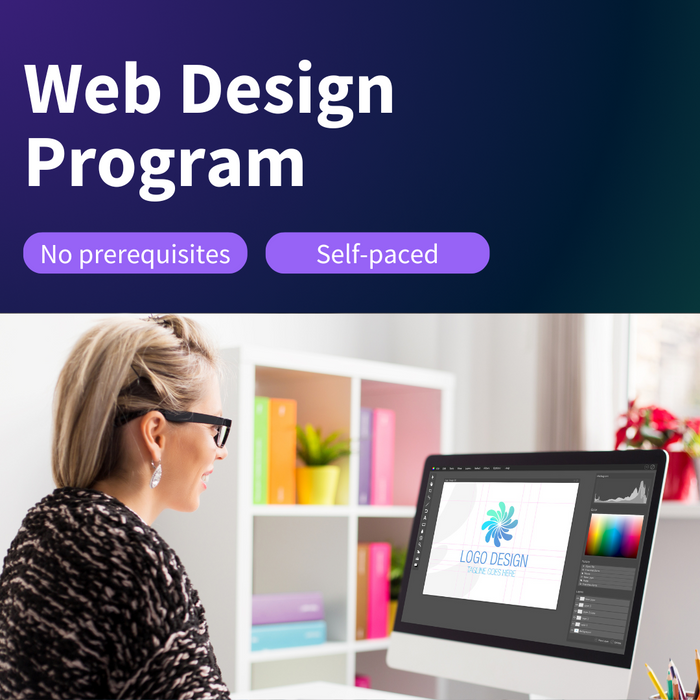Why Website Design Is Crucial for Building Count On and Engaging Consumers
In today's digital landscape, the value of internet style prolongs far past appearances; it is an essential variable in developing count on and fostering consumer involvement. A well-crafted web site not only forms very first perceptions but additionally affects individual experience, which can identify the longevity of consumer connections.

The Effect of First Impressions
The moment a visitor arrive on a web site, they promptly form an impression that can either involve them or drive them away. This immediate assessment, frequently based upon aesthetic elements, layout, and total aesthetic appeals, plays an important role in establishing whether individuals will discover additional or exit quickly. Research study indicates that customers typically make judgments about a web site's trustworthiness within mere secs, emphasizing the demand for a refined and specialist style.
A well-structured website that shows brand name worths promotes trust fund and motivates users to dig much deeper into the web content. Trick aspects such as color design, typography, and images must line up cohesively to develop a visually enticing experience. Conversely, a outdated or cluttered style can evoke apprehension, leading prospective consumers to question the brand's integrity.
Furthermore, the first perception expands beyond simple visuals; it incorporates navigation simplicity and capability. A website that is user-friendly and user-friendly makes sure site visitors feel comfortable exploring its functions. Inevitably, the impact of impressions can not be overemphasized; they lay the structure for customer engagement and long-term connections. Buying reliable internet design is, for that reason, a crucial strategy for building count on and inviting customers to communicate with the brand name.
Importance of Customer Experience
A favorable initial impact establishes the phase for a deeper connection between the internet site and the customer, making customer experience (UX) a crucial element of website design. UX encompasses all facets of the end-user's communication with the web site, influencing their complete satisfaction and engagement degrees. A properly designed UX makes sure that individuals can navigate the website without effort, discover information promptly, and full preferred actions with convenience.
Trick aspects of effective UX consist of responsive design, which enables smooth access on numerous gadgets, and clear navigation that lowers cognitive tons. When users encounter rubbing, such as slow filling times or complicated layouts, they are most likely to abandon the website, resulting in potential shed sales and decreased trust fund.
Moreover, a positive UX promotes psychological connections, motivating customers to return and recommend the website to others. In today's affordable landscape, spending in user experience is not just valuable; it is important for lasting development and success.

Structure Brand Reputation
Establishing brand name reliability is critical for fostering depend on among individuals and making certain long-term interaction with an internet site. A well-designed web site functions as the foundation whereupon reputation is built. Crucial element such as professional aesthetic appeals, instinctive navigation, and mobile responsiveness reflect a brand name's dedication to quality and user satisfaction.
Moreover, incorporating aspects like consumer testimonials, study, and market qualifications can significantly enhance viewed browse around here integrity. These parts give tangible proof of a brand's reliability and know-how, enhancing customers' self-confidence in their choices.
Consistent branding across all digital touchpoints also plays a vital function. Well-known logos, uniform color design, and cohesive messaging create a sense of familiarity and trustworthiness. They are a lot more likely to perceive the brand name as reliable and trustworthy. when individuals see a constant brand visibility.
Furthermore, safety functions such as SSL certificates and clear personal privacy policies assure users that their information is risk-free, further strengthening trust fund. By focusing on these aspects in website design, companies can efficiently construct brand name trustworthiness, creating a strong foundation for customer commitment and long-lasting success in an increasingly electronic marketplace.

Enhancing Client Engagement
Involving clients efficiently requires a critical technique that surpasses mere appearances. A properly designed site harnesses aesthetic elements, web content, and performance to create an immersive experience that records visitors' focus and motivates interaction. Trick elements consist of user-friendly navigating, engaging calls-to-action, and strategically put content that reverberates with the target audience.
Interactive attributes, such as polls, tests, and comment sections, cultivate a sense of area and encourage customers to participate proactively. This engagement not just enhances individual experience but likewise provides useful insights into consumer preferences and actions. Additionally, integrating multimedia aspects like infographics and video clips can share information a lot more dynamically, maintaining users involved much longer.
Furthermore, customization plays an essential function in boosting customer interaction - Web design. Customizing content based upon customer behavior and preferences makes site visitors really feel valued and understood, boosting the chance of return check outs and conversions
Inevitably, a website developed with interaction in mind goes beyond mere functionality; it ends up being a system for constructing relationships. By prioritizing individual experience via thoughtful layout and interactive components, organizations can cultivate deeper connections with their audience, promoting commitment and motivating recurring engagement.
Mobile Responsiveness and Ease Of Access
Over 50% of international internet website traffic now comes from mobile devices, making mobile responsiveness a vital consider website design. An internet site that seamlessly adapts to various screen sizes enhances user experience, which is important for maintaining site visitors and cultivating count on. Individuals expect to browse internet sites effortlessly, no matter of the gadget they are using. If a site is not mobile-friendly, possible customers may quickly desert it, bring about raised bounce prices and shed chances.
Designing with accessibility in mind makes sure that all users, consisting of those wikipedia reference with impairments, can connect with the website effectively. Access not only widens the audience yet likewise aligns with legal criteria and honest duties.
In addition, online search engine focus on mobile-responsive and easily accessible sites in their positions. This implies that buying these facets not only improves customer engagement but likewise boosts visibility in search results page. In final thought, mobile responsiveness and access are essential in website design, straight impacting user count on and general consumer involvement.
Conclusion
By developing a aesthetically attractive and user-friendly investigate this site interface, companies can enhance initial perceptions and enhance overall customer experience. Eventually, a well-structured site not only boosts brand reliability but additionally cultivates lasting consumer connections, making web layout a necessary element of effective electronic strategy.
A well-crafted internet site not just shapes initial impressions yet likewise influences individual experience, which can identify the long life of client relationships. Research study indicates that customers commonly make judgments regarding a website's credibility within plain seconds, highlighting the need for a refined and professional layout.
Investing in reliable web layout is, for that reason, an essential method for building depend on and welcoming individuals to connect with the brand.
A favorable first perception establishes the stage for a deeper link between the individual and the internet site, making user experience (UX) an important part of web style. In final thought, mobile responsiveness and access are essential in internet layout, directly influencing individual trust fund and overall customer involvement.